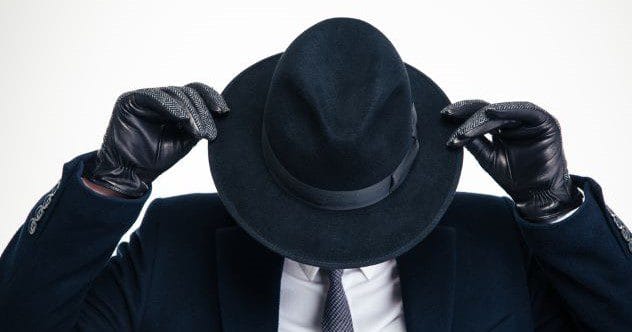Fashion trends are always changing, and what seems normal today might look ridiculous later. Sometimes, these trends are short-lived, while others have surprising reasons behind them. Think about Crocs – they might not be everyone’s favorite, but they became popular for a reason. History is full of even stranger and more fascinating fashion moments.
Peter the Great of Russia Cut Off People’s Beards
In the late 17th century, Tsar Peter the Great of Russia toured Europe and decided to make big changes back home. He wanted to modernize Russia’s military and navy to make it a strong, defensible world power. He also noticed that most Europeans were clean-shaven. If he was going to imitate them, he figured he should go all the way.
Peter called the Russian court together, pulled out barber shears, and started shaving beards! He then ordered all men, except peasants and clergy, to be beardless. This caused a backlash, especially from the clergy, who believed everyone should be allowed to wear beards for religious reasons.
Peter compromised by allowing people to keep their beards if they paid a tax. The lowest class paid only two kopecks, but nobles could pay up to 100 rubles. This beard tax lasted for almost 50 years after Peter the Great died. [1]
Boots Were Once Huge Because of Horse Manure on Roads
Today, boots aren’t as common. You mostly see them on people who work outside or need protection from the weather. Some people wear them for fun, but there aren’t many practical reasons for wearing boots anymore.
However, boots were once extremely popular and worn by almost everyone. This wasn’t just a strange fashion trend; it was practical. Streets were covered in horse manure because horses were the main mode of transportation. Even the cleanest cities couldn’t keep up. Drainage systems weren’t great either, so boots were essential during storms or sewage backups. [2]
High Heels Were Designed for Soldiers to Ride on Horseback Easier
Today, high heels are strongly associated with women’s fashion. Some women protest them as a symbol of male control, forcing them to wear uncomfortable shoes to please men. But the history of heels is more complicated.
Heels weren’t originally for women or meant to be fashionable. In the 10th century, the Persian army realized that high-heeled boots helped riders stay in their stirrups and shoot arrows more effectively. In the early 17th century, women started wearing heels to protest that men’s shoes were more comfortable. The high heels were still comfier than the platform shoes that were typical for women at the time. [3]
Parents Used to Care Little about Gender of Baby Clothing
Today, parents worry about how others see their child and how clothing affects their development. Even liberal parents usually stick to gendered or neutral clothing until the child is old enough to choose their own style.
However, as recently as the early 20th century, parents didn’t care much about what clothes their toddlers wore. Babies were commonly dressed in what we’d consider girly or gender-neutral clothes for convenience. Even the wealthy did it; there are pictures of Franklin Delano Roosevelt as a baby wearing what looks like a girl’s dress.
People back then didn’t think babies cared what they wore, so they didn’t either. Interestingly, those who cared about color had the opposite view of what we think today. Until the 1940s, pink was for baby boys and blue for baby girls. [4]
Those Fancy Ruffled Cuffs Had a Purpose
The fancy ruffles from old paintings defined an era of clothing and society. We often associate them with French dandies from the late 18th century, but they didn’t invent them.
Ruffles were invented by accident in the 16th century. People wore layers of clothing, which made them hot. Spanish soldiers slashed their layers for ventilation. Fashion designers took the idea and spread it worldwide. People also realized ruffles were a great way to discreetly wipe their faces. In a world without disposable napkins, this likely helped people stay cleaner. [5]
Powdered Wigs Were Often Infested by Insects and Very Filthy
Powdered wigs are romanticized as a hallmark of the elite in the colonial era. Powerful people had portraits done with their powdered wigs, so we don’t know what many of them looked like without one. They might look silly today, but we can’t imagine historical figures without them.
However, powdered wigs were often horrifically disgusting. They were vulnerable to lice. If your wig had lice, you were at risk too. Many wigs were made from goat or horse hair and were never properly cleaned. This meant most powdered wigs smelled terrible. [6]
Codpieces Became Popular to Hide All the Syphilis
Many have seen pictures of kings like Henry VIII wearing tights, giant codpieces, and rich robes and wondered about the bizarre dress. When a king did something, everyone followed. Codpieces became a men’s fashion item. Today, people laugh at them and think they might have been used to compensate for a small package.
But the truth is stranger. In the 15th and 16th centuries, codpieces were getting big, and so was syphilis. Kings started it due to vanity, but others followed for more than just trend reasons. They saw it as a perfect way to hide the symptoms of syphilis and protect their vanity. Syphilis can cause nasty symptoms that would be hard to hide if you were wearing tights. [7]
In the Time of Happy Days, Leather Jackets Had a Very Bad Reputation
The leather jacket has a long history. It started as a useful garment that was durable and didn’t need much cleaning. It became popular among bikers and was associated with criminals. This association stuck with some people.
Back in the days of the show Happy Days, censors were worried about a teenager wearing a leather jacket and what it might imply. They only allowed him to wear it when his motorcycle was on screen. This led to silly scenes where he had his motorcycle in places like a school hallway, which probably made him seem even cooler and more rebellious. [8]
Original Point of Men’s Neckwear Was to Protect Lungs from Cold
Neckties aren’t as popular as they once were. Even in formal professions, people avoid them. Some find them constricting and unnecessary. Others romanticize them. The truth is that neckties have evolved from their original utilitarian purpose.
Men’s neckwear originated from items like the cravat, which resembled a scarf. The original purpose was to keep people’s lungs warm, like a scarf. In rainy climates, something less bulky than a full scarf but still able to keep your neck warm was important before modern heating. [9]
People Used to Always Wear Hats; Now the Hoodie Is Bringing It Back
Today, hats aren’t common and are seen as a side fashion. Some people wear baseball caps for sun protection, but the practice has declined since the days when everyone wore a hat. As recently as the turn of the 20th century, most men considered hats mandatory.
Factors like better heating and air conditioning caused hats to fall out of fashion. However, as the environment has worsened even with improved technology, people are covering their heads again. Hooded sweatshirts and garments have become popular since the ’90s. Raincoats always have hoods. While the form changes, the utility of fashion comes full circle. [10]
These crazy fashion facts from history reveal the surprising reasons behind trends. From beard taxes and manure-covered streets to codpieces and the return of head coverings, fashion is more than just style—it’s a reflection of the times.
What’s the craziest fashion trend you’ve ever seen? Leave your comment below!










